Peering across the sea of red-tiled roofs, lush green parkland and bustling streetlife of Vilnius, it is hard to reconcile this pleasing reality with the city’s lingering reputation for Soviet era austerity. Indeed, since the fall of the Soviet Union precipitated a rebirth of cities and nation states across the Baltics and Eastern Europe, the Lithuanian capital has grown into a cool and compact mini-metropolis, driven forward by a youthful creativity, energy and ambition.
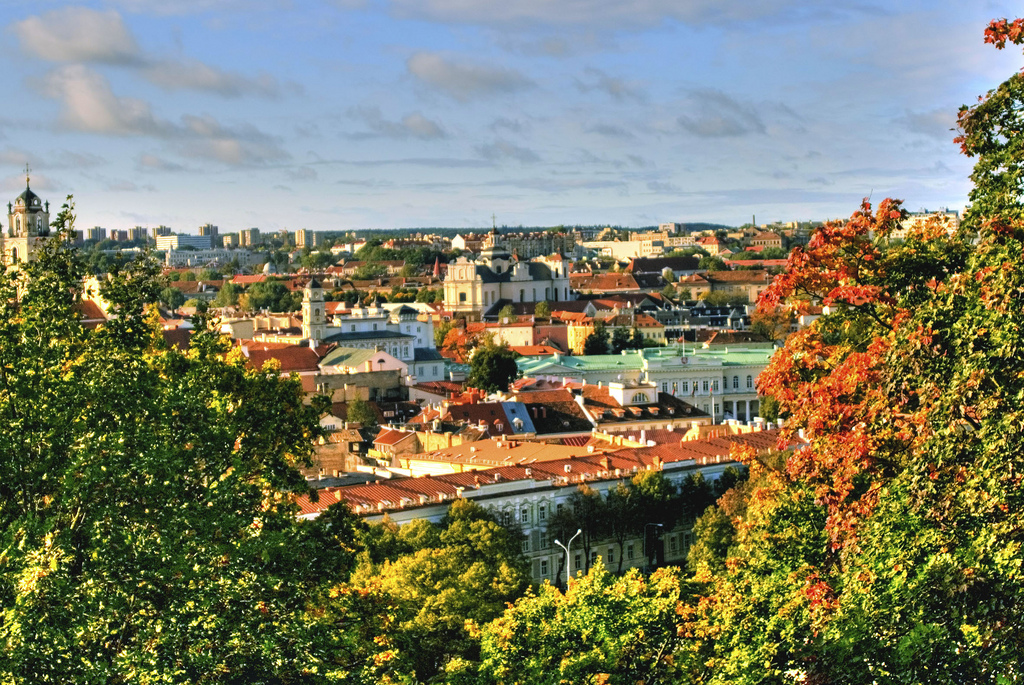
A pretty view over Vilnius rooftops (Photo: Angel via Flickr)
But word is rapidly spreading and while Vilnius continues to live in the shadows of some of its better known Baltic counterparts, booming visitor figures are evidence of a city – and indeed country – being propelled into the sunlit tourism uplands.
In short, Vilnius has emerged as a truly modern European city, with a a vibrant student population thanks to it own highly regarded university, an ever-growing craft beer scene, and a thriving technology sector that draws large numbers of international companies and entrepreneurs here. Ultra high-speed Wi-Fi (reportedly the fastest in the world) adds to the sense that this is a cutting edge city with its finger firmly on the digital and cultural pulse.
But don’t be deceived by all the mod-cons – the rich history of Vilnius is still evident across the city, most notably in its beautifully preserved medieval old town. Dotted with winding cobblestone streets, picturesque churches, and historical buildings of every architectural style, this is the beating heart of the city, where tourists and locals alike dip into shops, cafés and restaurants, or simply soak up the relaxed atmosphere and picturesque views.

A cobblestone street lined with shops and restaurants in Vilnius Old Town (Photo: EuroVizion via Flickr)
The year 2018 gives locals an extra special reason to recall and celebrate their country’s past, marking as it does 100 years of Lithuanian independence. A poignant landmark for a country that has experienced great trauma down the years, it serves as a chance for young and old alike to come together and present a modern, healthy expression of patriotism. Inevitably, the capital is the focal point for many of the events honouring jthe historic milestone, with large-scale concerts and other performances held across the city throughout the calendar year.
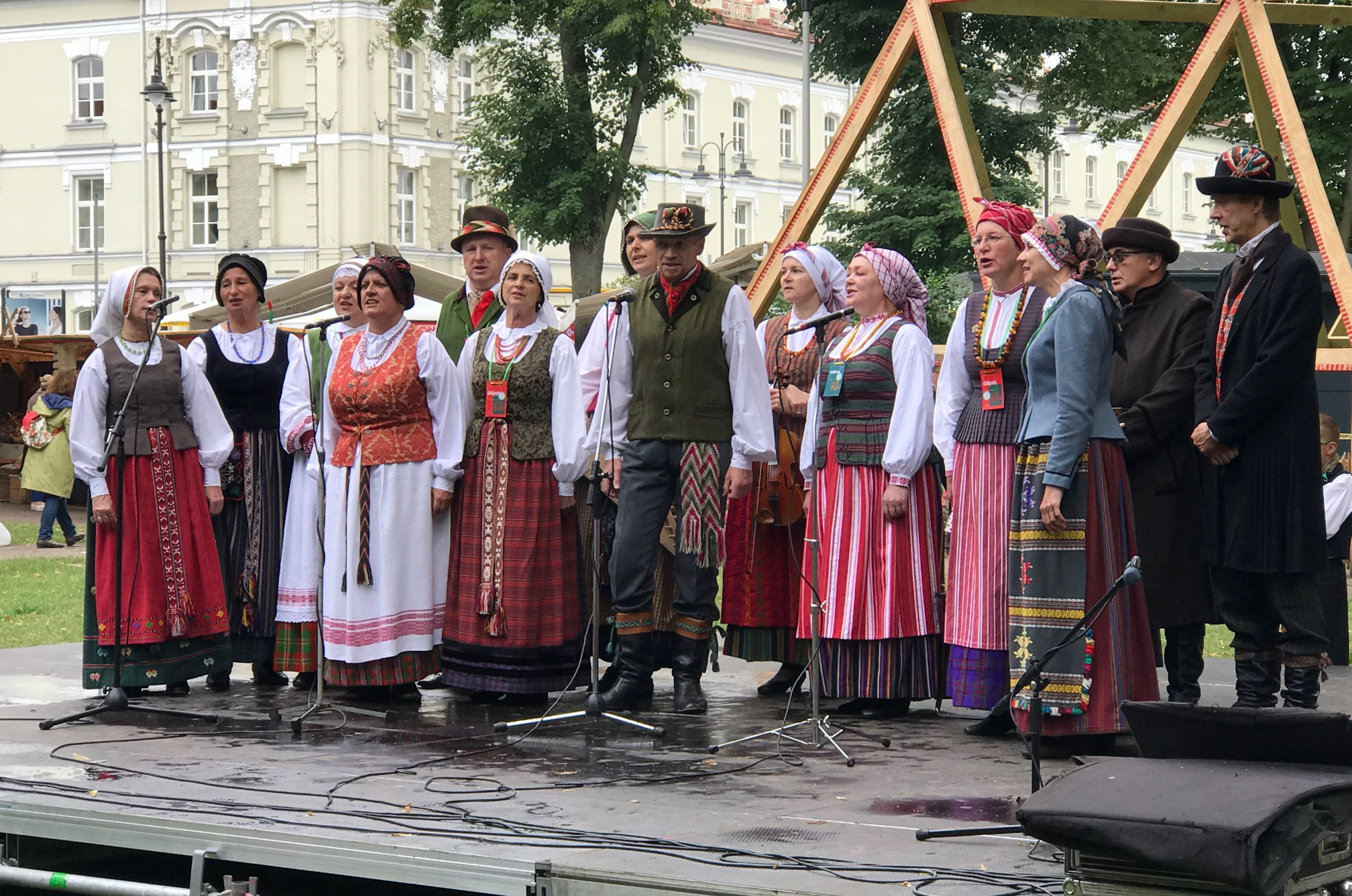
A performance by traditionally attired singers, part of the 100 Years of Lithuanian Independence celebrations in 2018 (Photo: Paul Joseph)
The most recognisable building in Vilnius’ Cathedral Square, sitting in front of the neo-classical Vilnius Cathedral, is unquestionably the Bell Tower (Šventaragio g. 1). Standing some 52-metres tall, the pearly white tower originally formed part of the city’s 13th century defensive wall, becoming a belfry in the 16th century. After numerous attempts at remodelling the structure, it was given its current look in the 19th century and is today a popular meeting point as well as a tourist attraction. Inside, there are functioning bells along with the earliest surviving clock mechanism in Lithuania. Visitors can walk to the top, count the steep, narrow steps along the way before being rewarded with panoramic views of the city from the summit.
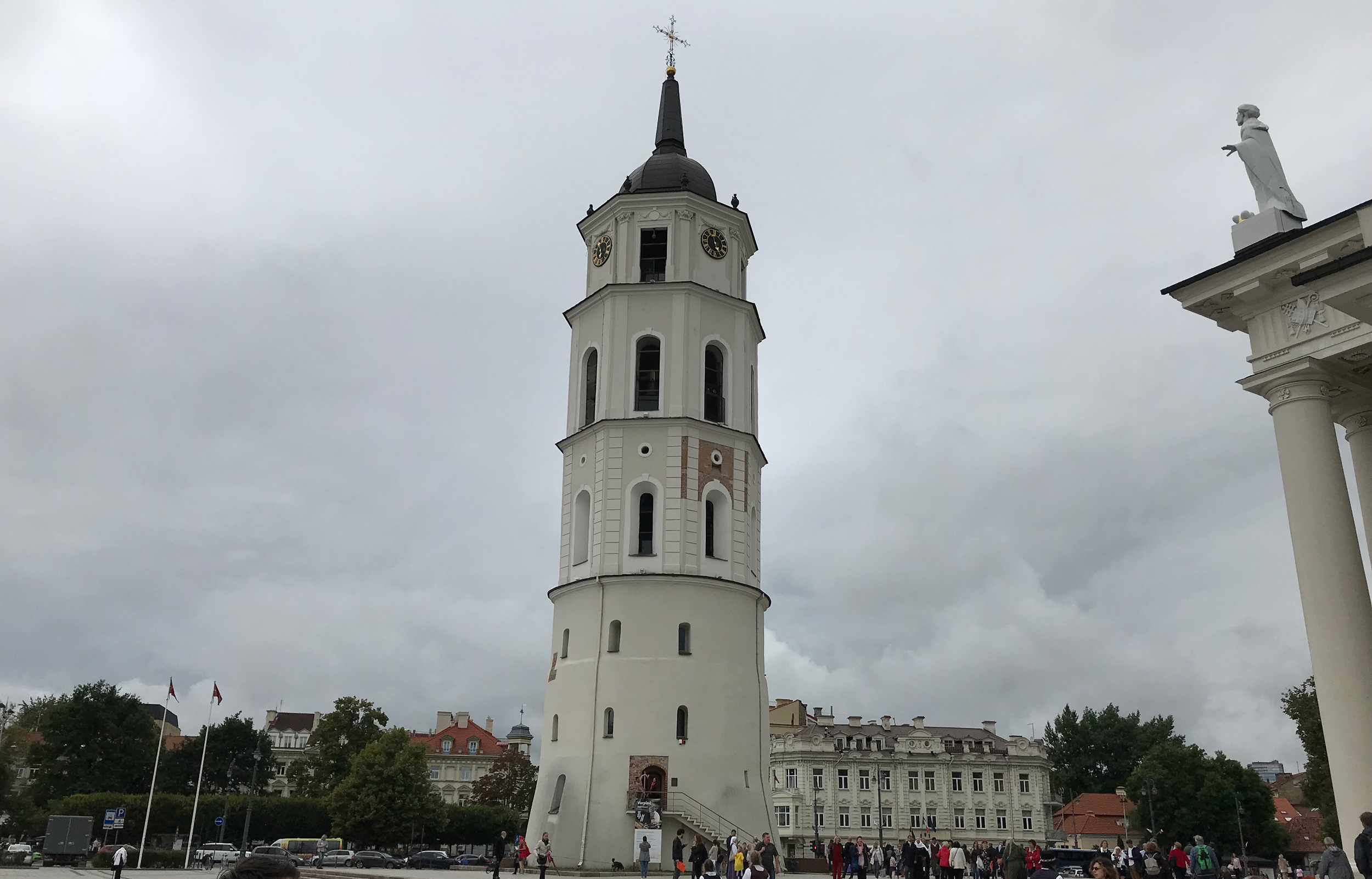
Vilnius Cathedral Bell Tower (Photo: Paul Joseph)
Rivalling the bell tower as one of the best vantage points from which to admire the city is Bleak Hill, one of seven hills that surround Vilnius and reachable via a steep footpath from Kalnu Park. Contrary to what its maudlin name may suggest, the hill offers captivating vistas – particularly at sunset – and is also the site of the Three Crosses (Kalnų parkas), a distinctive white monument that is steeped in Luthanian folklore. From here, visitors can enjoy stunning views of the surrounding cityscape and the other six hilltops around Vilnius.
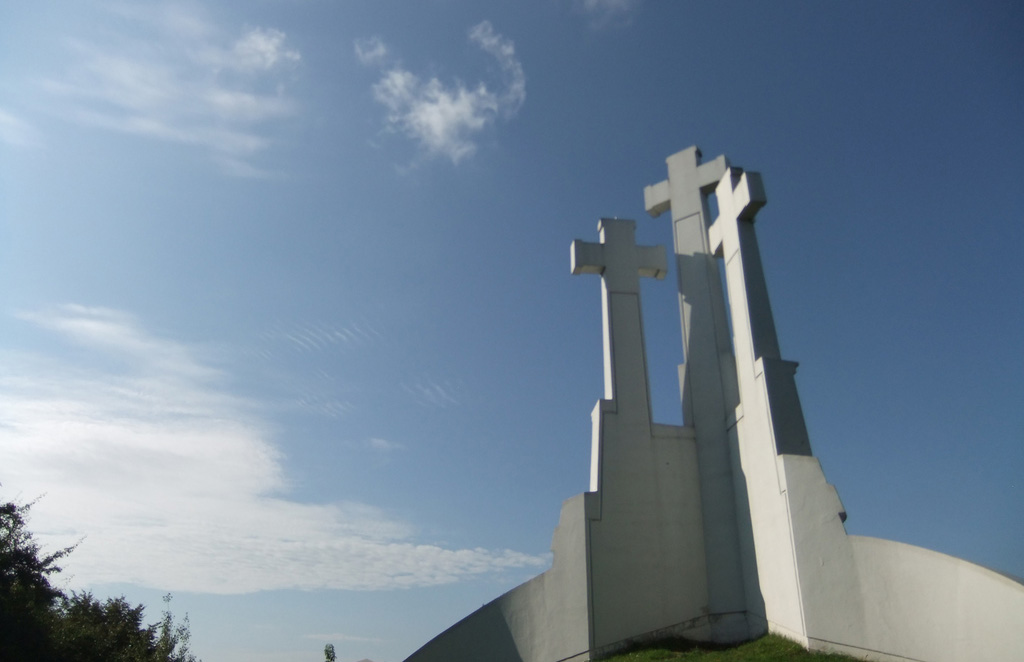
Three Crosses monument atop Bleak Hill (Photo: Peter Collins via Flickr)
Considered a masterpiece of the late Gothic period, St Anne’s Church (Maironio g. 8) is to many people’s minds the most visually impressive of all Vilnius’ myriad historic buildings and is a major symbol of the city. Composed of 33 different styles of brick assembled into a delicate and intricate whole, the effect is simply stunning. Its precise back-story remains shrouded in mystery, but legend has it that Napoleon Bonaparte was so fascinated by the beauty of the church that he wanted to take it back to Paris in the palm of his hand.
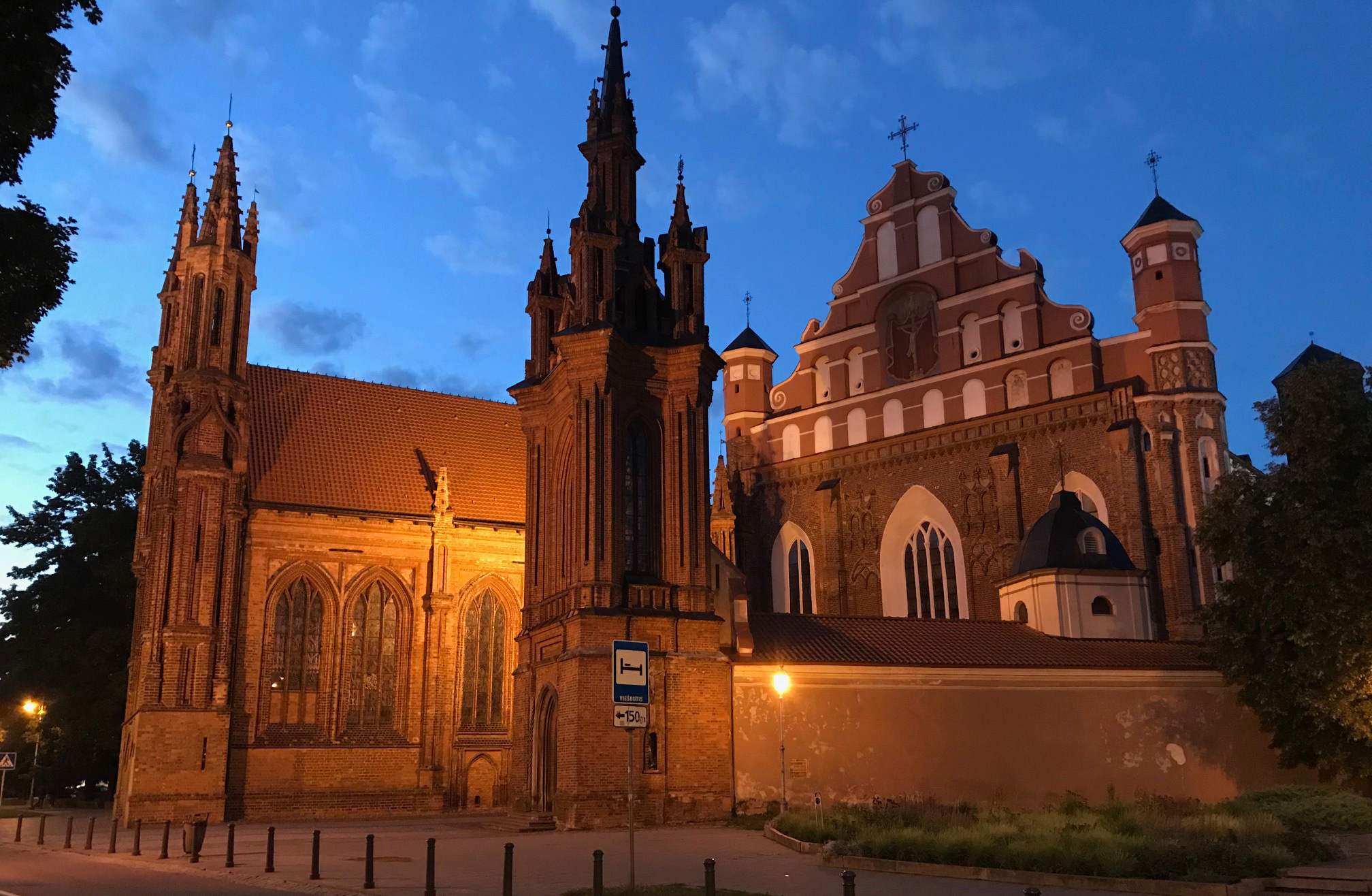
The eye-catching St. Anne’s Church by night (Photo: Paul Joseph)
No visit to Vilnius is complete without exploring the unique Užupis district, a bohemian haven for artists, writers and counter-culture types that – with tongue firmly in cheek – declared itself an independent Republic in 1999, even producing its own constitution to boot (e.g. ‘People have the right to be unhappy’). The story of Užupis dates back to the early 1990s and the fall of communism when Užupis contained little more than a rundown collection of buildings inhabited by prostitutes, the homeless and a struggling artistic community. When that community began to campaign for the area’s improvement in the mid-90s, legendary American musician Frank Zappa was chosen as a patron saint to rally behind (there is a bronze bust of him on K. Kalinausko g. 3). Fast forward a quarter of a century and Užupis is more vibrant than ever, awash with funky bars and cafes, imaginative street art, and host to a regular programme of fashion festivals, concerts, exhibitions and poetry evenings.
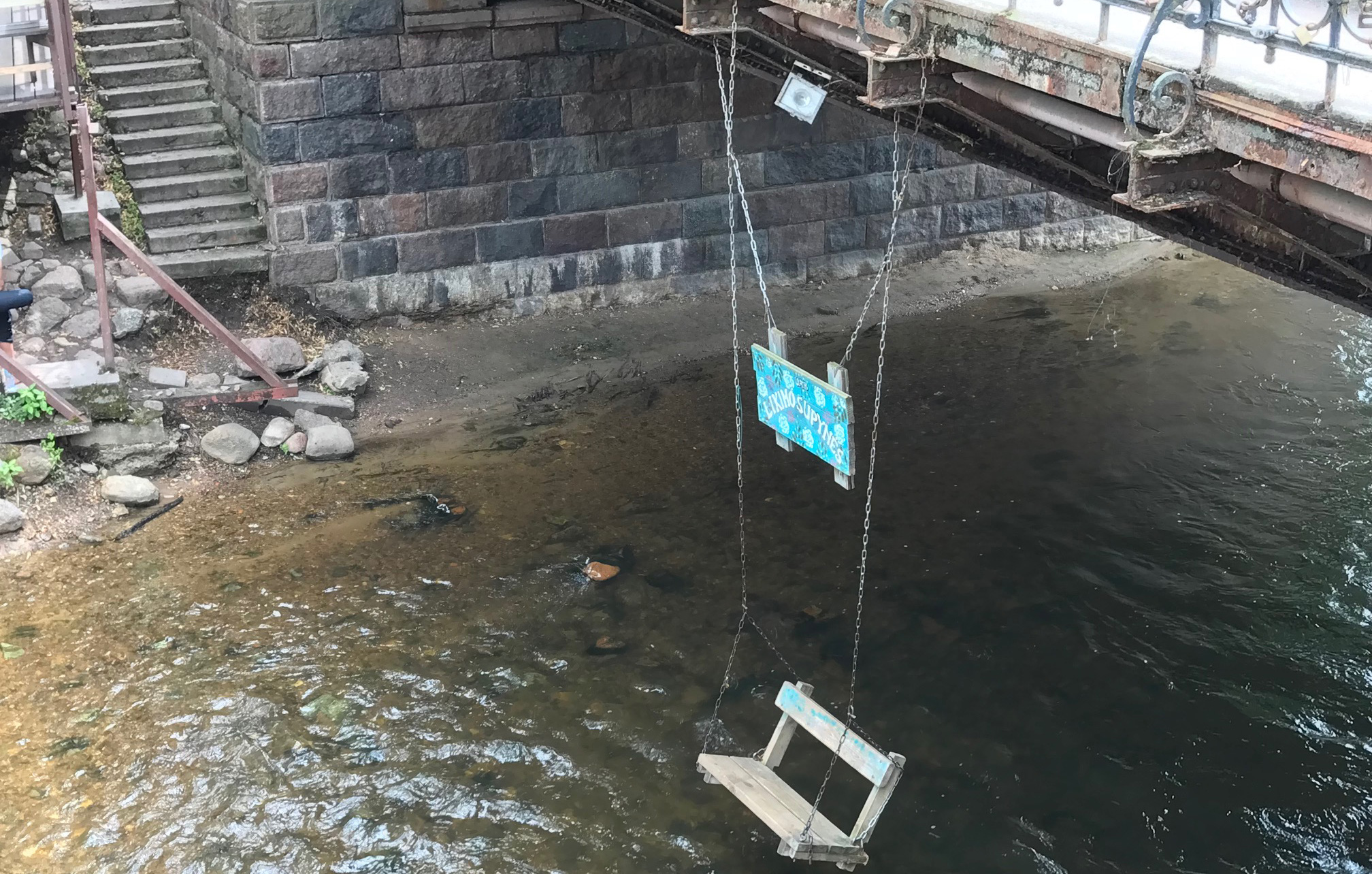
A bench dangles from a bridge in the bohemian neighbourhod of Užupis (Photo: Paul Joseph)
One excellent way of getting to know Vilnius is by joining one of the city’s walking tours. Vilnius With Locals is a company run by a team of friendly, and knowledgeable guides who host a variety of themed tours in the city itself, as well as a handful of excursions to places of interest elsewhere in Lithuania. The city tours last around 2.5 to 3 hours and include Soviet Tours, Food Tours, Jewish Tours and Alternative Tours. For the broadest and most immersive experience possible, opt for the Free Tour which takes you to all of the city’s most notable landmarks and attractions, including the Užupis district. As the name indicates, the Free Tour is free of charge and you simply pay what you think it’s worth at the end.
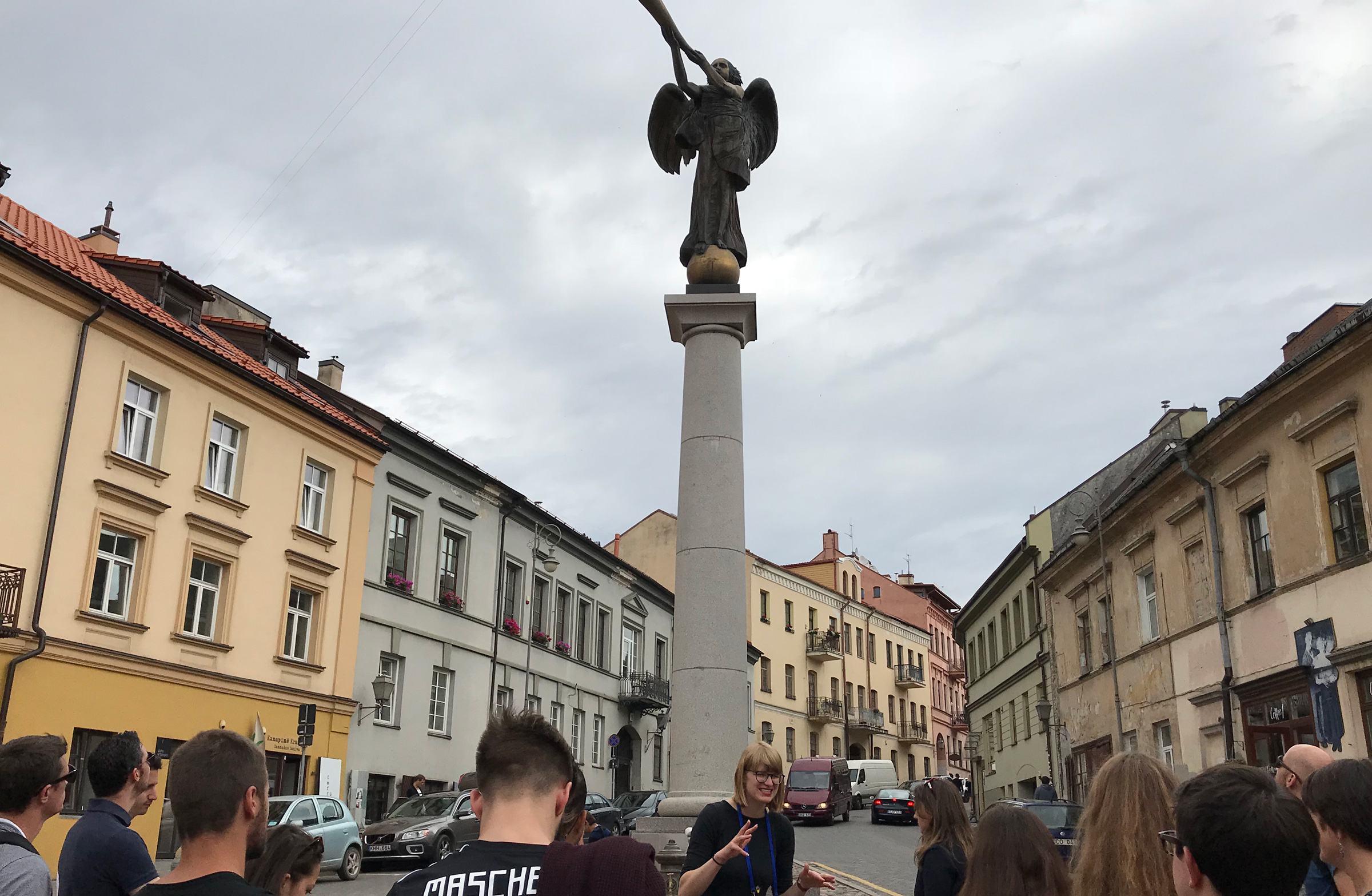
A Vilnius With Locals tour guide talks to guests in front of a statue in the city centre (Photo: Paul Joseph)
One of the most popular day trips from Vilnius is to Trakai Castle, once home to the rulers of Luthuania and today both a major tourist attraction and an events venue that hosts regular concerts. Surrounded by the waters of Lake Galvė, the 14th century castle offers a fascinating insight into Lithuania’s glorious – but often turbulent – past. A trip here with Vilnius With Locals lasts around 6 hours, including 1 hour each way by road, and also features lunch in Trakai (be sure to sample the kibinai pastries, traditionally filled with mutton and onion and said to be the best in the country) and an extended stop-off in the small town of Kernavė, Luthuania’s first capital and a major archaeological site that continues to unearth historical treasures and insights into the local geology.
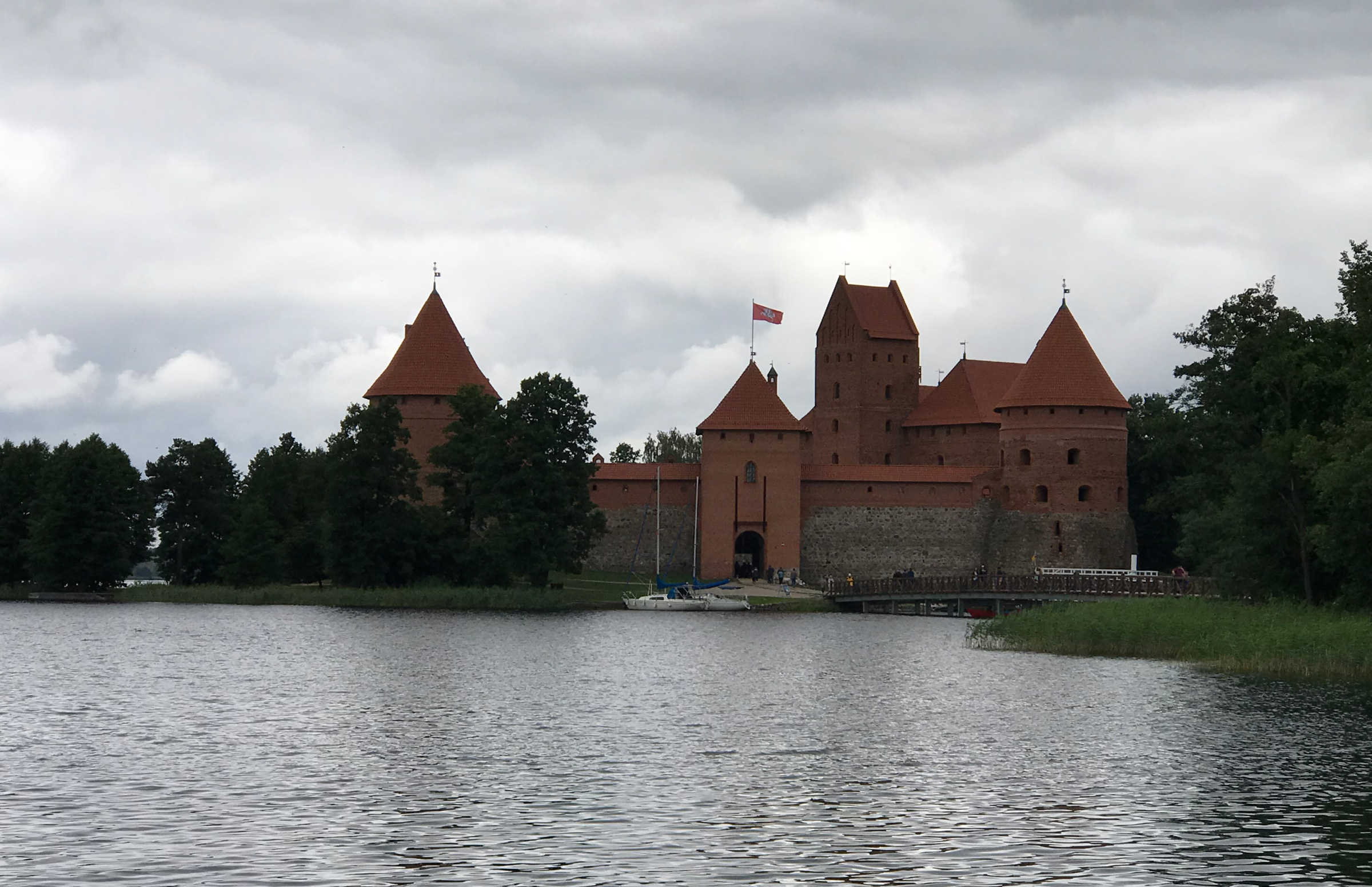
A view of Trakai Island Castle from across Lake Galvė (Photo: Paul Joseph)
Lithuania has a long and tumultuous history, from the prosperity of the Middle Ages to the devastating occupations of the 20th century. You can uncover its more recent ordeals at The Museum of Occupations and Freedom Fights (Aukų g. 2A), located on the site of the Gestapo’s HQ during the Nazi occupation of Lithuania in 1941. After the Nazis left a few years later, it became re-occupied by Soviet Secret Police – better known as the KGB. During this period the building was used to house prisoners and conduct executions and torture in its basement. Today its cells have been left virtually untouched, making it a distressing memorial to a past that many would rather forget, but that we are all compelled to remember.

A corridor with prison cells at the The Museum of Occupations and Freedom Fights (Photo: Adam Jones via Flickr)
Hotels
Among the modest number of luxury hotels in Vilnius, the Kempinski (Universiteto g. 14) stands high above the crowd – both literally and metaphorically. Set within a grandiose, 200-year-old building in the old town, seconds from Cathedral Square, the hotel has become the standard bearer for luxury in the capital. From the large, elegant lobby area where piano music gratifies the ears, to the beautiful guest rooms complete with pastel-coloured décor, oak furniture and marble bathrooms, to the lavish treatments proffered by the sumptuous spa, the hotel offers a masterclass in fusing contemporary luxury with classic opulence and charm.
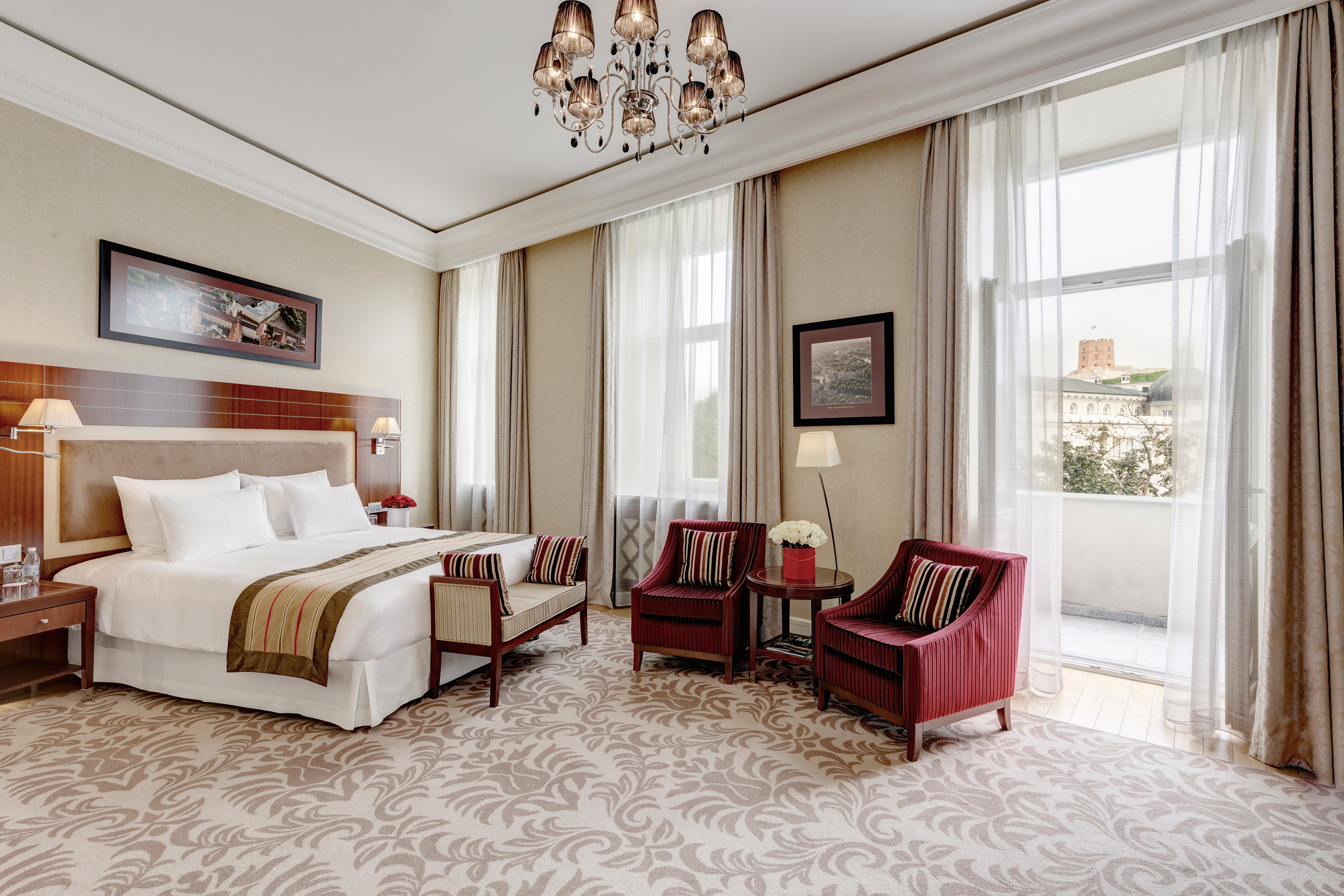
A lavish Deluxe suite at the Kempinski Hotel (Photo: Kempinski Hotels)
If you’re looking for somewhere a little more intimate, the 4-star Shakespeare Boutique Hotel (Bernardinu g. 8/8) could be for you. Set within a striking 17th century baroque building on a quiet street in the old town, the hotel is themed around Old England, with guest rooms reflecting the life-stories, literary works and hobbies of famous English writers of yesteryear. Elsewhere in the hotel, there’s an elegant restaurant and bar, plus a pretty terrace that’s ideal for pre-dinner drinks and nightcaps.
For a budget option, the 2-star Litinterp Guest House (Bernardinu g. 7) combines simple but cosy rooms and basic amenities with a great location, just a few minutes’ walk from Cathedral Square. Housed in a period building, all rooms are adorned with 18th century artwork and have a kitchenette and shared bathroom facilities, plus free Wi-Fi.
Restaurants, Bars and Cafés
For high-end gastronomy, Restaurant Telegrafas (Universiteto g. 14) offers an elegant fine dining experience in a setting that exudes old world European glamour. Housed within the Kempinski hotel overlooking Cathedral Square, the restaurant is helmed by a local executive chef who prides himself on infusing his cuisine with Lithuanian flourishes and flavours. Stand-out dishes include langoustines, turbot fillets, yellowfin tuna and the restaurant’s signature dish of Roe Deer, known as Treaures of Žemaitija Forest. The restaurant’s award-winning sommelier will also take your palette on a magical journey across both old and new world wines and champagnes. During the summer months, you can dine on the outdoor terrace and watch the world go by as you savour your meal.
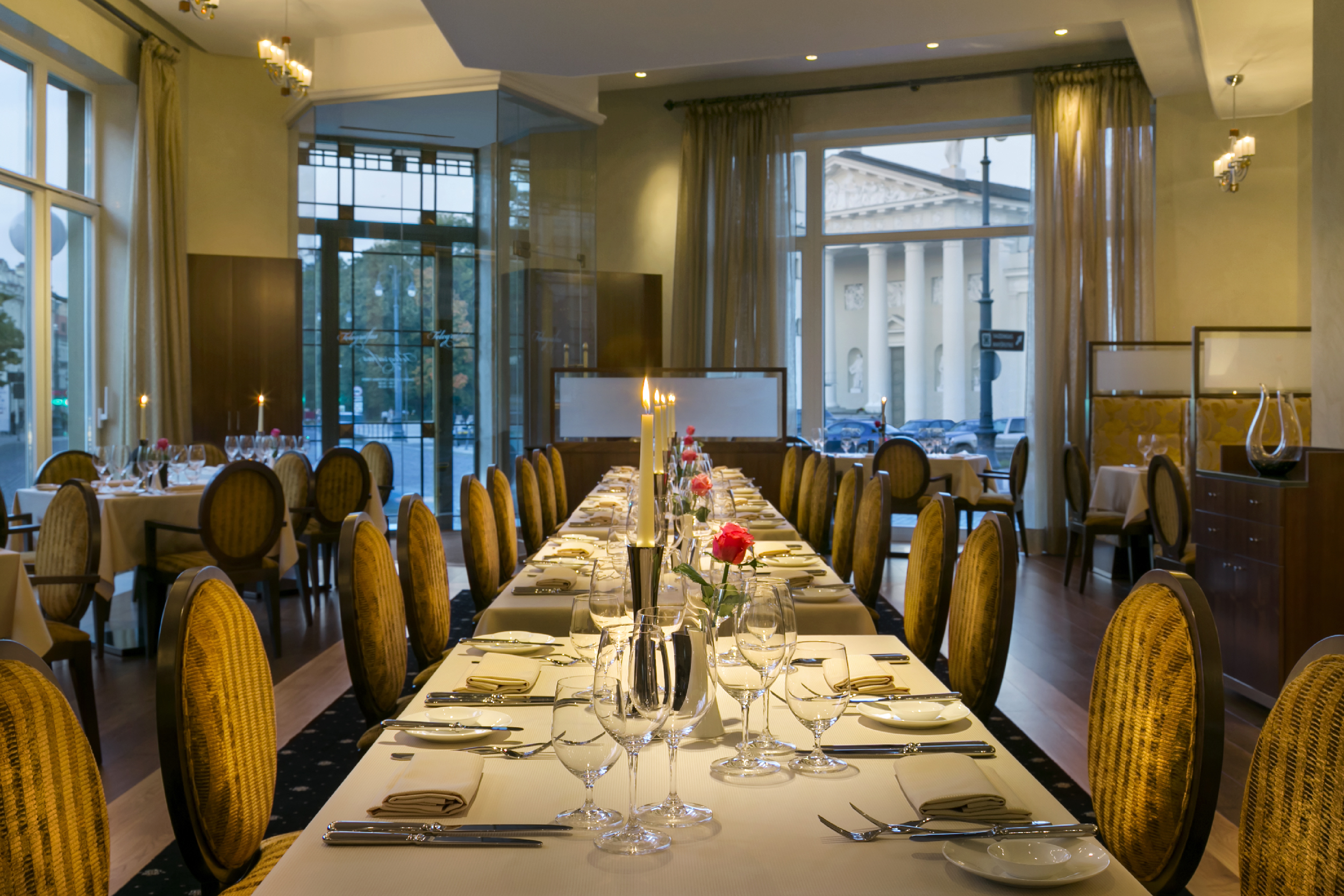
The sumptoous interior at Restaurant Telegrafas (Photo: Kempinski Hotels)
Old town districts are usually peppered with tourist trap eateries, but one of the great charms of Vilnius is that its visitors numbers are (for now) low enough to have avoided such a fate. A perpetual favourite in the heart of the old town is Forto Dvaras (Pilies g. 16), a labyrinth-like restaurant whose unassuming exterior conceals a cavernous, atmospheric interior. The food is superb too, with a vast menu full of reasonably priced, Lithuanian dishes, including classics such as Cepelinai (potato dumplings stuffed with meat), Šaltibarščiai (cold beetroot soup) and Šaltiena (meat or fish with vegetables in jelly form).
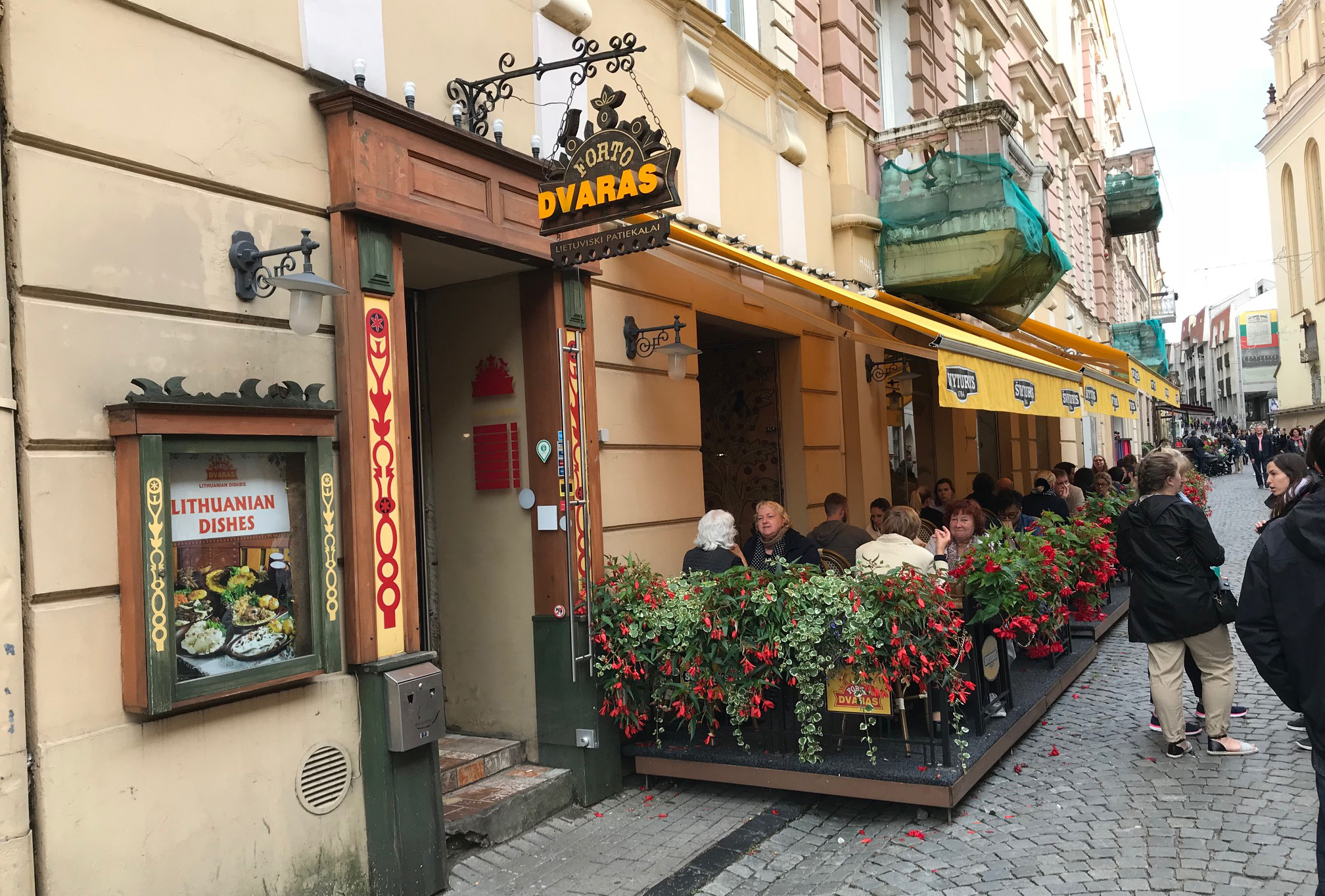
Forto Dvaras, a popular restaurant in the old town (Photo: Paul Joseph)
In recent years Vilnius has acquired a world class reputation for its production of craft beer and most of the city’s pubs and bars now have at least one locally brewed option available. One of the most popular watering holes is Špunka (Užupio g. 9-1), situated just in front of the Angel statue of Užupis in Vilnius’ famous hipster quarter. The bar itself is small and relatively humble, but the choice of beers is exceptional, with several beers brewed in local microbreweries available on tap along with a variety of bottled foreign beers too. A range of homemade cheeses and meats helps line the stomach.
Shops
Vintage boutiques are hugely popular in Vilnius and probably the best place to pick up second-hand clothes, shoes, handbags, jewellery and other accessories is De’Žavu Vintage Boutique (Šv. Ignoto g. 3). With three stores across the city, every item sold is individually hand-picked by a team of vintage experts, ensuring that provenance and quality is never in doubt. The stores also have a pop-up section featuring one-of-a-kind items, so you can be sure you’ll never meet a person wearing or holding the same thing.
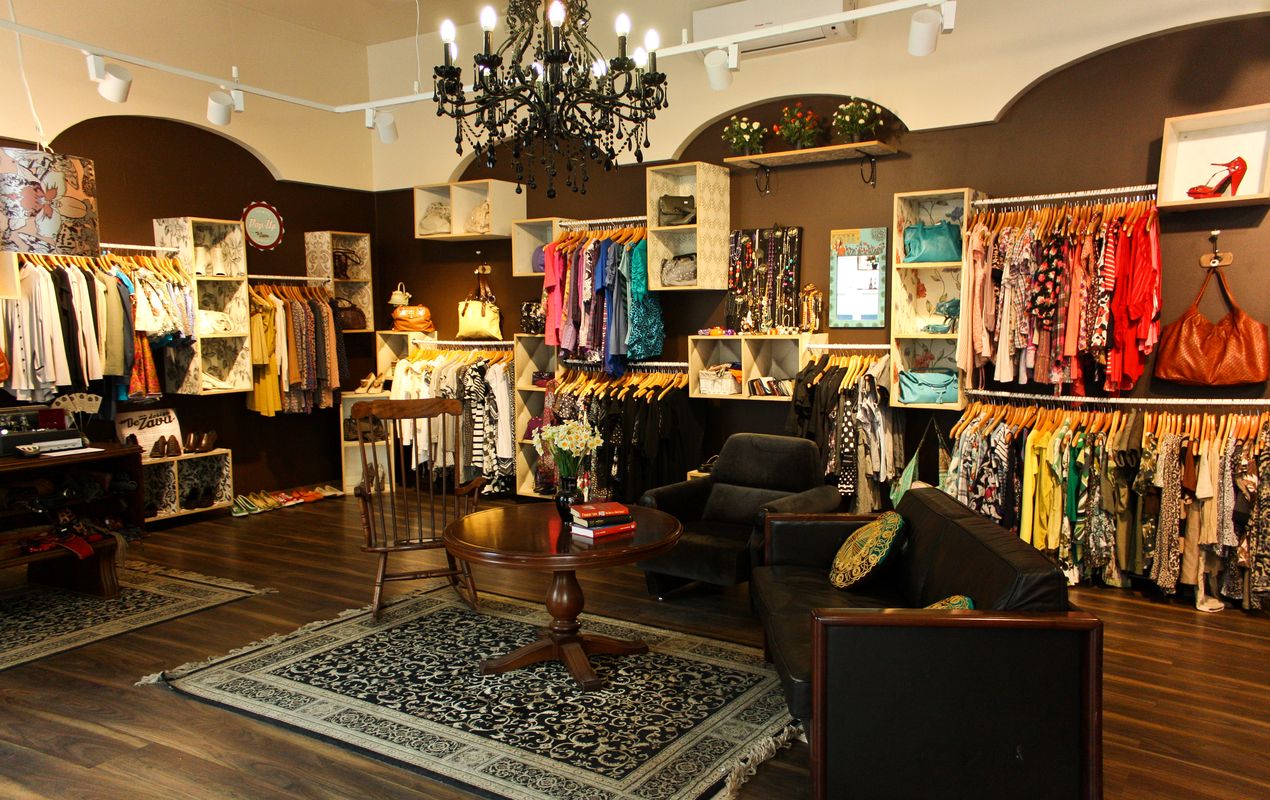
Vintage clothes on display at De’Žavu Vintage Boutique (Photo: De’Žavu Vintage Boutique)
Much valued from antiquity to the present, Baltic amber is one of the most famous Lithuanian exports and the Amber Museum-Gallery celebrates the country’s centuries-long relationship with the highly sought-after fossilized tree resin. Spread across a two-storey building, a wide range of exhibits and displays offer explanations about the formation, colour, harvesting and processing of Baltic amber. Visitors can also purchase amber jewellery here, with all goods coming with a certificate of authenticity that guarantees the high quality of real amber.

Beautiful amber for sale at the Amber Museum-Gallery (Photo: Amber Museum)
Tucked away in a tiny sidestreet in Vilnius old town, The Whisky Bar by Duoklė Angelams (Pilies g. 25) is home to more than 500 whiskies from all over the world – including several extremely rare whiskies – and is an ideal place for picking up presents for friends back home. The staff are hugely knowledgeable and will help you pick out the right whisky to suit your tastes and budget. The shop also sells several rums, gins, tequilas, cognacs, and its adjoining whisky bar next door is open at night and often packed with whisky lovers enjoying a wee dram or three.